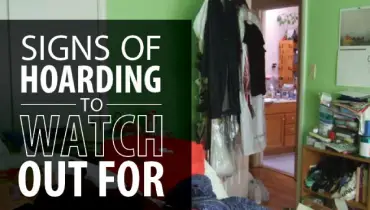
Rainbow Restoration highlights key signs of hoarding to help identify and address this challenging condition early.
|
Everyone deals with clutter from time to time. But for the 3-5% of Americans who are compulsive hoarders, it goes beyond the occasional mess, preventing hoarders and their families from leading safe, healthy lives. Are you living with a compulsive hoarder?
What Defines Compulsive Hoarding?
For hoarders, it is difficult to get rid of possessions, regardless of value. Commonly hoarded items include valueless things such as newspapers, magazines, and even permanently broken appliances. The issue is not that people keep these items. It’s the quantity of items that sets compulsive hoarders apart, resulting in emotional, physical, relationship, financial, and even legal damage to the hoarder and their family members.
Warning Signs & Symptoms of Hoarding
Though hoarder behavior is not stereotypical, as the extremely-severe cases seen on TV, there are commonalities:
- Inability to Get Rid of Things
Compulsive hoarders cannot be nagged into cleaning up. Despite feeling overwhelmed and helpless, sufferers of this mental illness typically respond in anger or defensiveness, requiring professional help to deal with emotions beneath their hoarding compulsion to move forward. - Severe Anxiety about Discarding Items
This disorder transcends messiness. Currently categorized as an anxiety disorder, hoarding shares symptoms with obsessive-compulsive disorders. Therapy, and sometimes medications, are often needed for hoarders to gain the capacity to discard items. - Denial there is a Problem
Defensive on confrontation, hoarders are unable to recognize problematic living conditions, citing objects as useful or irreplaceable. - Obsessive Thoughts and Actions
Hoarders often fear running out of an item/needing it in the future. They may even check the trash, worrying over the unintentional disposal of objects. - Compulsive Buying
From overbuying to collecting free stuff, warning signs of hoarding include repeatedly coming home with more than intended, and items that sit unused/unopened. - ‘Clutter Blindness’
Compulsive hoarders do not see how their home looks to others. Has someone you trust expressed concern about your potential hoarding tendencies? - Chronic Disorganization that Impedes Daily Activities
Hoarders have extreme difficulty sorting/organizing possessions. Constantly looking for things (keys, wallet, phone…) they are chronically late, having problems just getting through the day in an environment surrounded by randomized clutter. - Fear of Others Touching Things
Hoarders are overprotective of their belongings, quickly becoming angry when others touch their things for fear of damage. - Hoarded Items Have No Value
Compulsive hoarders keep everything from junk mail to broken appliances and clothes that haven’t been worn in years, believing they may be of use some day. - Parts of the Home Become Unusable
The home of a compulsive hoarder is striking. Furniture is often moved to the room center as the periphery is stacked higher and higher with useless items, leaving only room for small pathways to a chair, bed, or room. - Living Conditions are Unhealthy or Dirty
Hoarders often live in dirty, unsanitary conditions that adversely affect the health of all in the home. Longstanding soiled dishes, laundry, and toilets are not uncommon. - Refusal to Invite Company Into the Home
Hoarders (and live-in family) are often socially isolated, ashamed or afraid to let others in their homes and turning away from family and friends to better hide the problem. - The Collection of Not Just Things, but Animals
In some cases, OCD tendencies lead to too many pets as well, further contributing to messy and unsanitary living conditions as hoarders are unable to properly care for animals.
The Five Stages of Hoarding:
- Level One: Some clutter. Doors and stairways accessible. Home remains safe and sanitary.
- Level Two: Clutter in 2+ rooms. One exit blocked. Limited housekeeping: Light mildew in kitchen/bath, overflowing waste bins, some visible pet waste, odors.
- Level Three: One bed/bath unusable. Strong odors. Heavily soiled food prep areas. Excessive pets. Thick dust. Visible clutter outdoors.
- Level Four: Sewage backups. Hazardous wiring. Rotting food on counters. Pest infestation in bedrooms. Pet damage and flea infestation.
- Level Five: Disconnected electric/water. Kitchen and baths unusable. Rodent infestation. Human and animal feces present.
Living With a Hoarder - What Do I Do?
Living with a hoarder can be emotionally draining. Fighting and demands will not help. This mental condition requires the help of a trained professional – and a lot of patience and understanding. Educate yourself on the condition, looking for the psychological reasons behind hoarding tendencies. Recommend professional assistance. Well-trained counselors will not barge in and toss items in the trash. They will work side-by-side with your loved one, treating and improving the condition as gradual progress I made. Seek help for yourself as well, including counseling and improved living arrangements should you feel your safety and health is at-risk.
Ready for a fresh start? Look to the understanding services of Rainbow Restoration ® to help you forge a new path. Contact us today.
